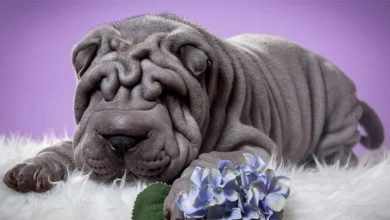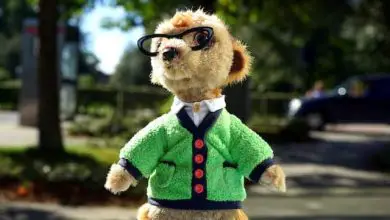Rare Basenji Colors: Uncovering the Beauty Within


Basenjis are fascinating dogs known for their unique traits and striking appearances. While many people are familiar with the common colors seen in Basenjis, such as red and white or black and white, there is a world of rare and captivating colors within this breed. In this article, we will explore the rare Basenji colors that exist, delve into the factors that influence their occurrence, and discuss the joys and challenges of owning these exceptional canines.
Understanding Basenji Dogs
Breed Overview
The Basenji is an ancient breed originating from Central Africa. Renowned for their intelligence and independence, these dogs have a rich history and were originally bred for hunting purposes. Basenjis are medium-sized, well-muscled dogs with a distinctive appearance, including a curly tail, erect ears, and almond-shaped eyes.
Temperament and Characteristics of rare basenji colors
Basenjis are often described as cat-like due to their independent nature and cleanliness. They are curious, alert, and possess a mischievous streak that keeps their owners on their toes. While they can be reserved with strangers, Basenjis form deep bonds with their families and exhibit a strong sense of loyalty. These dogs are also known for their unique vocalization, which resembles a yodel or howl.
Popularity and Demand of rare basenji colors
In recent years, Basenjis have gained popularity among dog enthusiasts due to their intriguing personality and distinctive appearance. The demand for Basenjis, including those with rare colors, has been steadily increasing as more people discover the charm and allure of this breed.
Common Basenji Colors
Red and White
One of the most commonly seen colors in Basenjis is red and white. This color combination typically features a rich red coat with white markings on the chest, feet, and tail tip. The contrast between the red and white creates a visually striking appearance.
Black and White
Another frequently observed color in Basenjis is black and white. These dogs exhibit a predominantly black coat with white markings in similar areas as the red and white Basenjis. The black and white combination provides a classic and elegant look.
Tricolor
Tricolor Basenjis feature a combination of black, tan, and white. The black is the dominant color, with tan markings on the face, legs, and eyebrows, along with the characteristic white markings. Tricolor Basenjis exude a refined and stylish aura.
Brindle
Brindle Basenjis have a unique coat pattern characterized by streaks or flecks of darker color on a lighter background. The colors can vary, with some exhibiting a red brindle pattern and others displaying a black brindle pattern. Brindle Basenjis possess a captivating and distinctive appearance.
Tan and White
Tan and white Basenjis have a primarily tan coat with white markings. The tan coloration ranges from light to dark shades and is usually combined with white on the chest, paws, and tail tip. Tan and white Basenjis emanate a warm and inviting presence.
Uncommon Basenji Colors
Blue
Blue Basenjis have a dilute gene that affects the eumelanin pigment, resulting in a coat that appears bluish-gray. This rare color is highly sought after by enthusiasts due to its uniqueness and ethereal quality.
Lilac
Lilac Basenjis, also known as “Isabella,” possess a diluted liver gene that creates a light brownish-gray coat with a subtle lavender hue. Lilac Basenjis are incredibly rare and have a captivating and enchanting appearance.
See also: What to Do if Your Dog Gets Stung by a Bee on the Face
Isabella
Isabella Basenjis have a lighter variation of the liver gene, resulting in a soft and delicate shade of brown. This rare color gives Isabella Basenjis an air of elegance and grace.
Cream
Cream Basenjis have a light, creamy-colored coat. These dogs exhibit a pale shade of tan or fawn, creating a gentle and soothing visual aesthetic. Cream Basenjis are a rare sight and are cherished for their gentle and serene demeanor.
Sable
Sable Basenjis have a coat color that ranges from light to dark, with a blend of different shades. The individual hairs display a mix of colors, resulting in a striking and textured appearance. Sable Basenjis possess an alluring and dynamic coat pattern.
Rare Basenji Colors
Rare Merle Patterns
Merle is a fascinating coat pattern found in various dog breeds, and although rare, it can occasionally occur in Basenjis. Merle Basenjis have a marbled or mottled coat with patches of diluted color, usually in a combination of gray, black, and white. These extraordinary patterns make Merle Basenjis truly one-of-a-kind.
Rare Piebald Patterns
Piebald refers to a coat pattern characterized by patches of white and another color. Rarely seen in Basenjis, piebald patterns can add a unique and captivating element to the dog’s appearance. The distribution and size of the patches can vary, resulting in individualized and eye-catching designs.
Rare Dilute Colors
In addition to the aforementioned rare colors, Basenjis can also exhibit dilute versions of the common colors. These dilute colors have a softer and more muted appearance, adding a touch of sophistication and rarity to the dog’s overall look.
Factors Affecting Rare Color Occurrence
Genetics and Inheritance
The occurrence of rare colors in Basenjis is primarily influenced by genetics. Various genes and alleles interact to produce different coat colors and patterns. Breeders who have a deep understanding of color genetics can selectively breed Basenjis to increase the chances of rare color occurrence.
Breeding Practices
Intentional breeding and careful selection play a crucial role in producing Basenjis with rare colors. Experienced breeders who prioritize preserving and promoting rare color variations meticulously plan their breeding programs to achieve desired results. Responsible breeding practices ensure the health and well-being of the dogs involved.
Unique Challenges of Owning Rare Colored Basenjis
Health Concerns
While rare colored Basenjis are captivating, it’s important to note that certain coat color variations can be associated with specific health risks. Dilute colors, for example, are linked to an increased susceptibility to skin conditions and sun sensitivity. Owners of rare colored Basenjis should be aware of these potential health concerns and take necessary precautions to ensure their pets’ well-being.
See also: What Age Should You Neuter Your French Bulldog?
Maintenance and Car e
Basenjis, regardless of their color, require regular grooming and care. However, certain coat colors may require additional attention. For instance, light-colored Basenjis may be more prone to staining, requiring diligent cleaning and maintenance. It’s essential for owners to understand the unique care requirements associated with their Basenji’s rare color variation.
Appreciating the Beauty of Rare Basenji Colors
Owning a Basenji with a rare coat color is a true privilege. These unique colors not only make the dogs stand out visually but also reflect the breed’s diverse genetic heritage. Rare colored Basenjis captivate the hearts of dog enthusiasts and showcase the endless beauty and possibilities within this beloved breed.
Conclusion
The world of rare Basenji colors is a captivating realm, offering an array of stunning and unique coat variations. From the ethereal blues to the enchanting lilacs, these rare colors add an element of intrigue and fascination to the already remarkable Basenji breed. While rare colored Basenjis may come with their own challenges, the joy and pride of owning these exceptional dogs outweigh any obstacles. So, embrace the beauty of rare Basenji colors and celebrate the diversity within this extraordinary breed.
FAQs about rare basenji colors
Here are the FAQs about rare basenji colors:
Are rare colored Basenjis more expensive?
Yes, rare colored Basenjis are often more expensive due to their rarity and high demand.
Can you breed rare colored Basenjis?
Yes, with careful breeding practices and a deep understanding of color genetics, it is possible to breed Basenjis with rare colors.
Are there any specific health risks associated with rare colors?
Dilute colors, in particular, can be associated with skin conditions and sun sensitivity. It’s important to provide proper care and protection for Basenjis with rare colors.
How can I find a reputable breeder for rare colored Basenjis?
To find a reputable breeder, research local Basenji clubs, attend dog shows, and seek recommendations from trusted sources. Ensure the breeder follows responsible breeding practices.
Do rare colored Basenjis have different temperaments?
No, the rare color variations in Basenjis do not affect their temperaments. The temperament of a Basenji is primarily determined by genetics and upbringing, rather than coat color.




